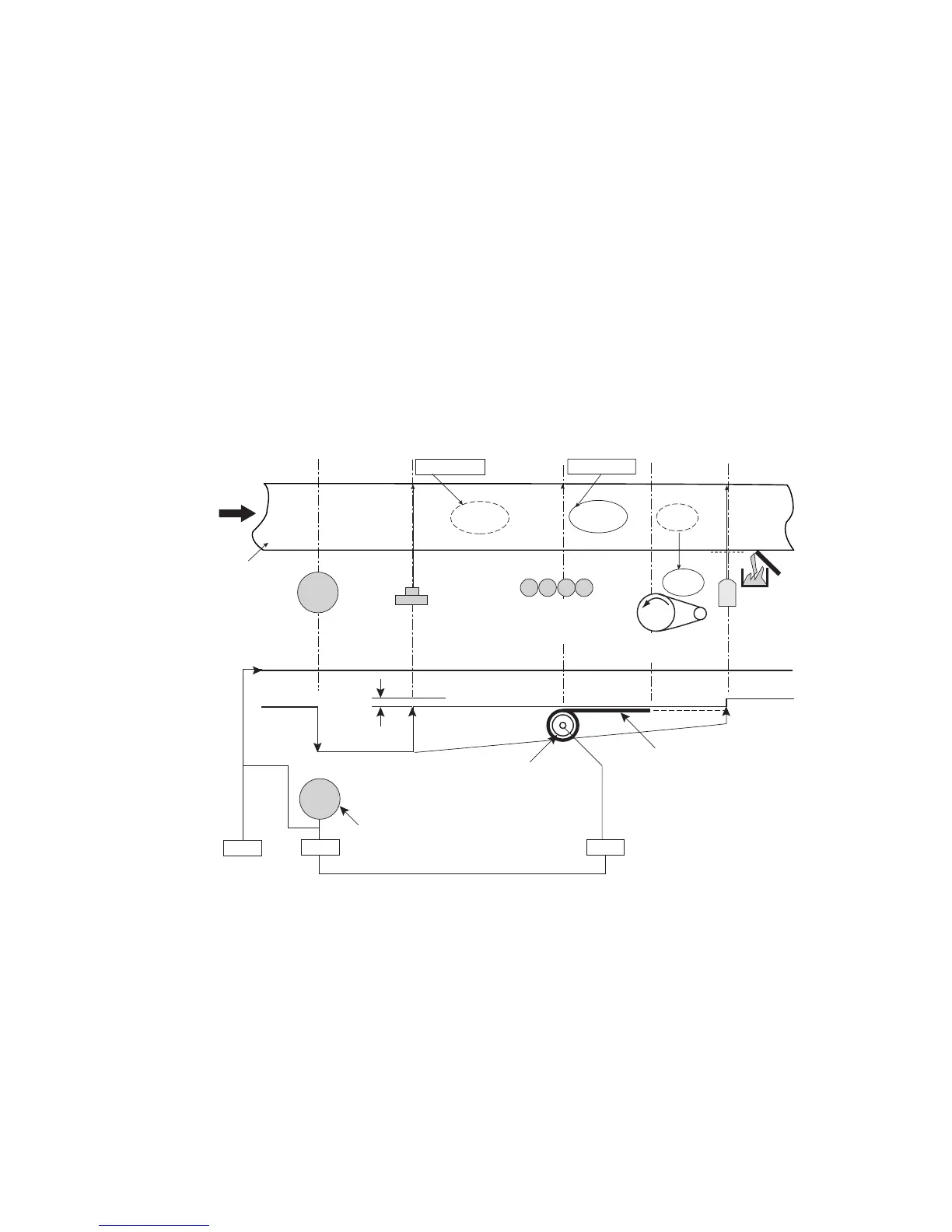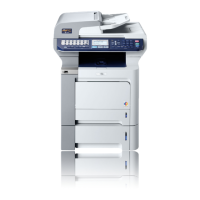Confidential
3-10
(2) Variation of OPC Belt Potential (See Fig.3-11.)
1) The OPC belt is initially biased to -CBV(V).
2) The OPC belt surface is evenly charged to V
0
(V) in the charging process.
3) The potential of the exposure part of the OPC belt is reduced to -VR(V) as it is exposed to
the laser beam in the process of exposing, and an electrostatic latent image is formed on
the OPC belt as the result.
4) Negatively charged toner is moved onto the exposed part of the OPC belt in the
development process due to the difference of potential between -VR(V) (the latent image)
and -DBV(V), and a visible toner image is formed as the result.
5) Negatively charged toner on the OPC belt moves to the transfer drum surface in the
transfer process because the GND potential of the transfer drum is greater than -VR(V) of
the OPC belt.
6) The OPC belt is discharged by the erase lamp.
-CBV
-CBV
-CBV
-CBV
-V0
-V0
-V0
-V0
-V0
-V0
-V0
-V0
-V0
-V0
brother
-V0
-V0
-V0
-V0
-V0
-V0
-V0
-V0
-V0
-CBV
-CBV
-CBV
-CBV
Charging
Laser Diode
Exposing
Blade
K Y M C
Developing
Transfer Belt
Erase Lamp
OPC Belt
-DBV
-CHV
-CBV
OV
OPC Belt Surface
-CBV
-V0
-VR
OPC Charger Roller PU
Dev Roller
-DBV
(M)TONER
-V0
-V0
-V0
-V0
-V0
-V0
-V0
-V0
Latent Image
Toner Image
brother
brother
Fig. 3-11

